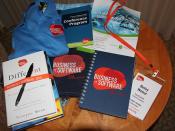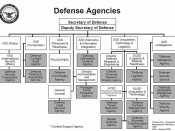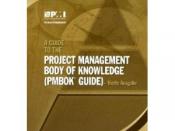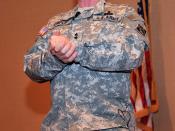While I continue blazing a trail on the frontier of paperless contracting, the United States Defense Department is discovering a new set of opportunities and challenges emerging from change in the contracting theatre. As in any formidable military operation, its leaders are striving to complete the mission successfully, while gathering information to distribute with others who are sure to follow the path of more efficient procurement practices.
As we discussed previously, PD2 is constructed in layers to provide flexibility for diverse Defense Department agencies. Although this program is partially proprietary, it works with a suite of products produced by Microsoft and Lotus applications. Because procurement divisions feature a wide range of existing components, the selected technology had to accommodate a variety of elements. PD2 supports stand-alone personal computers, large-scale servers, Windows networks, and other networking protocols.
The software is employed throughout the entire procurement cycle including requirement definition, pre-solicitation, solicitation, source selection, award, award administration, acceptance, payment, and closeout.
I would keep the existing database as a baseline; however, I would accommodate changing regulations as well as additional capabilities as well as updates to the software issued on a quarterly basis. My version, PD2 Version 5.0, will feature an updated architecture of all the features currently installed in the program, but also allow for the import of PDF files or word documents essential to the contracting process. (PD2 does not currently allow attachments or document import).
Because of the magnitude of the task, I would take an incremental approach in training personnel as well as delivery and implementation of the software. The Standard Procurement System (SPS) is for an audience that is very different from most computer users.
This methodology is made up of five stages. The first stage is a feasibility study. A proposed information system is examined to determine whether the specific businessProcurement 3requirements are met. The methodology is a sequential one. If the organization is happy that its requirements are met then the next stage is started. If the organization is not happy then another study will be carried out. The next stage is the analysis of the current system. This involves creating the plans necessary and agreeing on the size and depth of the study. A detailed investigation of the current system is undertaken, in terms of data structure and system processes.
This investigation is documented together with any requirements and problems. There are several information-gathering techniques implemented such as observation, interviewing and conducting questionnaires with the organizations employees.
The third stage is the requirement specification. The system option that the organization has chosen is documented in full detail. An examination of the input and output can be examined. There must be full agreement between the analyst team and the user before further progress is made.
The next stage is the logical system specification. The physical implementation of the required system is addressed at this stage. A number of technical options are created specifying languages, packages, and implementation platform. An option is then selected based on performance and cost. Stage number five is the physical design. During this stage, physical data, processes, inputs, and outputs using the languages and features of the chosen technical option is converted from the logical design. The user manual and the test plan are defined.
Contracting professionals are all people who are used to working in contracts and procurement; on a daily basis, we find different challenges from the user and program management side. Because the PD2 is deployed across all services and defense agencies, a wide variety of personnel, technical skill levels, and established business procedures exist.
Procurement 4PD2 replaced twelve previous procurement systems. Some customers have been working in automated procurement processes for several years and have designed procedures that meet their needs. In other locations, acquisition personnel are still using paper forms and data entry. In addition, most procurement centers have computer equipment; some do not have the adequate infrastructure to support my new version of this product. Funding to purchase upgrades is not included within the SPS program budget, unfortunately leaving infrastructure improvements up to the individual commands and their own budgets. The most significant change I would incorporate into this program would be its usability.
Currently, the program is advantageous to the procurement contract feature. It allows the user to create a solicitation, from a template that has already been created, allow bidders to place their bids in an electronic format which is attached to the solicitation, and finally it allows the user to receive these bids electronically and create a contract from the solicitation that was already created.
My PD2 allows you to take control of your contract lifecycle, from authoring and negotiation through implementation, enforcement, evaluation, and closeout. An additional time saving advantage this system offers is it builds off the original document. Every time a modification is issued to the contract, it keeps the pertinent information in memory so you do not have to retype it again.
The disadvantage of this application is that it is an internet-based program and only one user can view the document at any given time. When the server to the internet is down, the program cannot be used and the more individuals using this system, the slower it becomes; it could be very costly to operate. Affordability of this upgrade is something my group has yet to figure out.
Procurement 5ReferencesProject Management Institute. (1996). PMBOK - A Guide to the Project Management Bodyof Knowledge. The Project Management Institute, Sylva, NC.
Procurement Desktop-Defense [Computer software]. (2008).






